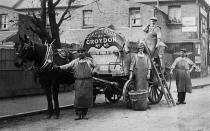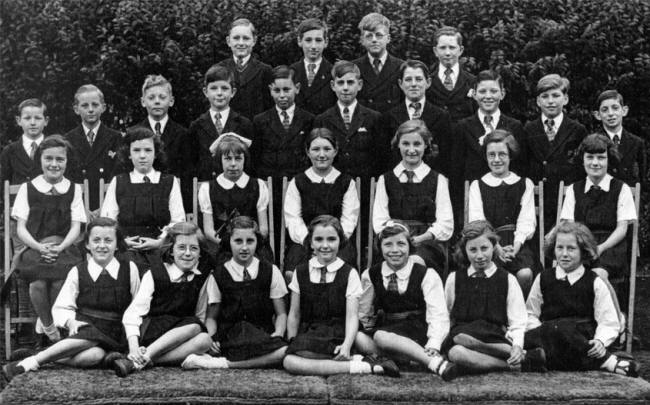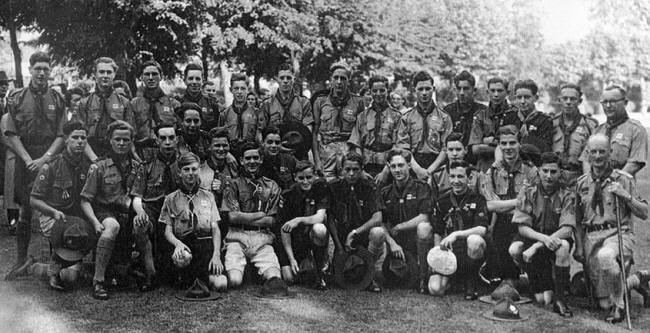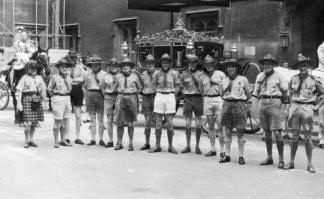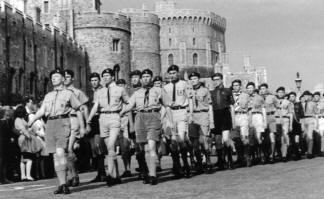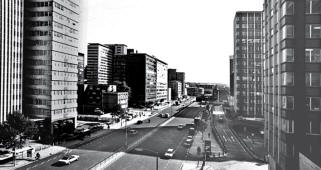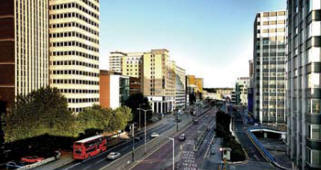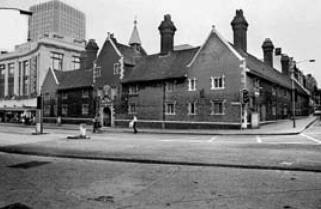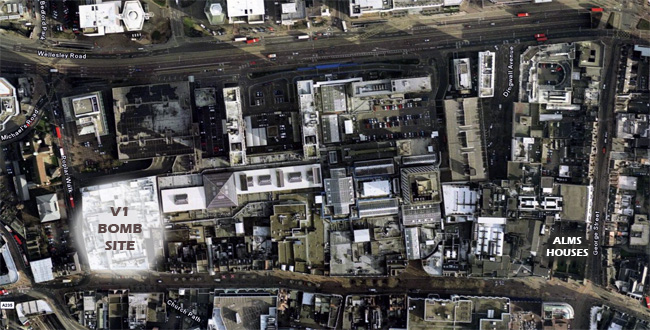|
John Cobley (JRGS 1958-65) recalls his grandfather, Frederick Griffin... |
|
John Cobley, San Francisco, USA, June 2008 Email |
|
Ken Couchman (JRGS 1942-46) recalls more of wartime life at our school... |
||||
|
The year 1942 was a relatively quiet
period during the war, after The Blitz until the Doodle-bugs came along.
We took the test which was the precursor of the 11+ and 14 boys and 14
girls won scholarships from Norbury Manor junior school. I was one of
six selected by Mr. McLeod, the headmaster for John
Ruskin school, and we were all from Northborough Road, in Norbury. Five
of my colleagues are shown above. From left- to-right: myself,
Peter Whitechurch, Peter Higgs, Chas Dunbar and
Peter Packham. Click on any thumbnail to view a larger image.
The Remove Class
The five individual images
shown above come from a photograph of The Norbury Manor Junior School
Scholarship Winners from 1942. As far as I can remember, the scholarship
recipients were (left-to-right):
I have also located a photograph taken at
the 1947 Scout Jamboree in France, for which we were selected one
from each scout troop. I am not sure whether it represents all of Surrey
scoots, or just Croydon. Ken Couchman, Auckland, New Zealand, May 2008 Email Mike Marsh (JRGS 1949-55) adds: It was interesting for me to see Ken Couchman's pictures of the Scouts at the 1947 Jamboree. Difficult to tell whether they were from just Croydon or Surrey generally as they are all wearing the Jamboree scarf, and their County badges are impossible to see! At that time I had recently started in the Wolf Cubs but I attach some scouting pictures taken several years later, prompted by seeing the "big" scout hats on the floor in front of the group in France. Click on either thumbnail to view a larger image.
The one of us also wearing
big hats (shown left) was taken at the State Opening of Parliament in 1963 when we
(the Rover Scouts of Croydon District) were offered the chance to take
part. Here we are standing in front of the State Coach - I am third
from the right. The offer came about through the War Office Rover Crew,
one of whose members was also a Croydon Rover Leader.
David Pedgley (Whitgift Middle
School 1942-49) adds: Let me add a couple of names to the
photo from Ken Couchman of the Norbury Manor Junior School Scholarship
Winners of 1942. I am in the second row from the back, third from the
left. I went to Whitgift Middle School, not JRGS. The girl at the
right-hand end of the front row is Joan Bushell. I recognise
other faces, but cannot add names. And I have remembered that Ford's
name was Maurice. |
|
Mel Lambert (JRGS 1959-65) reviews the Apr and May issues of Your Croydon... |
||||
|
Once
again, the April and May 2008 editions of Croydon Council's
Your Croydon magazine include photo essays from
Frazer Ashford (JRGS 1962-69) as part of his continuing series
entitled From Here to Modernity, which charts Croydon
during the past 25 years.
Specifically, in his April 2008 feature
Frazer compares photos taken in Wellesley Road looking north,
with the Whitgift centre shown on the right.
Click each thumbnail below to view a larger version
of Frazer's Then
and Now images, or
here to view the
24-page magazine in PDF format.
For his May 2008 feature,
Frazer compares photos taken of the Whitgift Almshouses, before and after the
tram lines were added along George Street and down Crown Hill.
Click each thumbnail below to view a larger version
of Frazer's Then
and Now images, or
here to view the 24-page magazine in PDF format. Mel Lambert, Burbank, CA, USA. May 2008 Email. Your Croydon ©2026 Croydon Council. |
||||
|
ML adds: This is the same
image featured on the front cover of Croydon in the 1940s and
1950s, published by the Croydon Natural History & Scientific
Society (CNHSS), 96a Brighton Road, South Croydon, CR2 6AD;
ISBN: 0 906047 09 9.
Roger Adcock (JRGS 1963-68)
adds: Referring to the statement, "The Whitgift
Hospital/Alms Houses on the right show some evidence of wartime
bomb damage," I do not recall bomb damage to that end of
Croydon. So I pulled out the worthy and excellent Courageous
Croydon, printed by The Croydon Advertiser in about
1990 from a series of articles printed in 1984 to cover the then
40th Anniversary of the flying-bomb offensive.
ML adds: Page 24 of Croydon in the 1940s and 1950s also contains a map showing the V1 bomb sites. The nearest one to the Alms Houses that I can locate was at the corner of North End and Poplar Walk, opposite West Croydon station, as shown above. ©2026 Google Earth.
Derek Charlwood (JRGS
1958-64) adds: Reviewing Frazer's photos of Wellesley Road
(shown below) looking to the underpass - the tall office
building just left of centre, end on to the camera with what
looks like a secondary flat roof was called "Southern House",
and it was occupied by
|
|
Archived News/Events Pages have been moved here. |
|
The content of this web site is provided for educational purposes only, and is subject to change without notice. The JRGS Alumni Society makes no representation about the accuracy, reliability, completeness or timeliness of the content of this web site, nor the results to be obtained from using any part of such content. |
Please send any messages and memorabilia to
webmaster
©2026 JRGS Alumni Society. All
Rights Reserved. Last revised:
07.12.25

